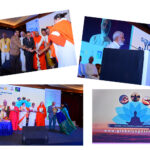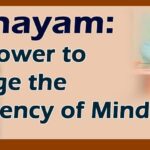The Indispensable – Yoga. If one wants to be sane, sensitive, sensible, strong and intuitive one has to follow Yoga. It has the capability to discover the hidden talent and regenerate the lost focus.
A yogi discovers the unlimited possibilities, unlimited solutions and unlimited ways around every single solution. Thus, one needs to stop seeking external solutions to internal problems. Retreat into solitude, sit in silence, do yoga and illuminate shadows. Do Yoga and Heal. Bruce lee once said- “Empty your cup so that it may be filled; become devoid to gain totality. Thus, it becomes necessary to empty the mind and gain fresh energy to drill the skills. Yoga creates the drastic change in life. It provides flexibility, regenerates dead cells and shifts the level of the frequency into a happy and peaceful mode.
Yoga and Meditation also relate to the spiritual aspect of life. According to Ayurveda, the soul is the source of life and health. Yoga postures, breathing exercise, mantra and visualization, meditation is all aimed at silencing the mind. Without this, our life has no real center around which the other practices of right living can be organized.
1.YOGA FOR SPINE
HUMANS CANNOT LIVE WITHOUT A SPINE: –
The spine connects your brain to your body. As the brain animates much of our body, that connection point between the spine, brain and body is essential to your survival. Our body operates on nerve signals. Nerve signals rely on a functioning central nervous system, which consists of your brain and spinal cord. Without these nerve signals, your body would cease to function. As a result, a human can’t live without a spine due to the severed connection between the brain and body it would entail.
Some common back pain conditions include:
• Back sprains and strains:
• Cauda equina syndrome:
• Congenital conditions like spina bifida, kyphosis or scoliosis:
• Degenerative disc disease:
• Herniated or ruptured discs:
• Spinal osteoarthritis:
Yoga postures for healthy spine are:-
Bhujangasana- Cobra Pose
This gentle backbend stretches abdomen, chest, and shoulders. Practicing this pose strengthens your spine and may soothe sciatica. By providing a conscious opening in the chest and stretch in the shoulders, Cobra Pose, called Bhujangasana in Sanskrit, fights fatigue and relieves lower back ache.
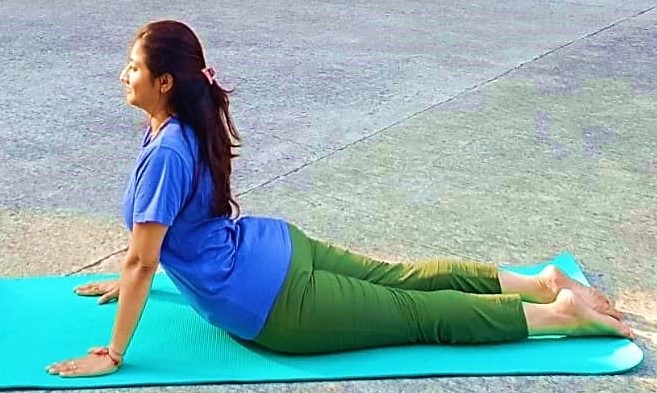

Benefits of Bhujangasana (Cobra Pose)
1. It opens up the shoulders and neck to relieve pain
2. Tones the abdomen
3. Strengthens the entire back and shoulders.
4. Improves flexibility of the upper and middle back.
5. Expands the chest
6. Improves blood circulation
7. Reduces fatigue and stress
8. Useful for people with respiratory disorders such as asthma
9. Improves back flexibility
10. Generates Healthy feelings
Backbone facts
The spine contains over 120 muscles, around 220 individual ligaments and 100 joints.
The spinal cord weighs around 35 grams.
The length of the spinal column in the average man is 70cm, and in the average woman it’s 60cm.
The spinal cord is part of the central nervous system and is contained inside the spine.
Humans and giraffes have the same amount of vertebrae in the neck.
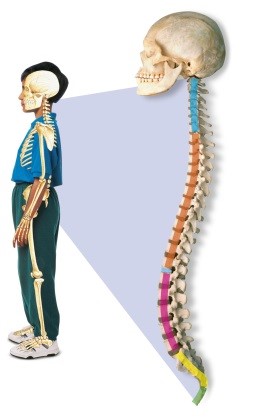

Benefits of Camel pose (Ustrasana)
Ustrasana is the chest opening backbend that is energizing and beneficial. It is a wonderful addition to the sequence since it prevents sloughing and eases lower back stiffness.
The camel pose allows spine extension without taking the support of arms unlike wheel pose( Chakrasana)
It improves the level of self-confidence.
Improves the flexibility.
It helps correct round shoulders.
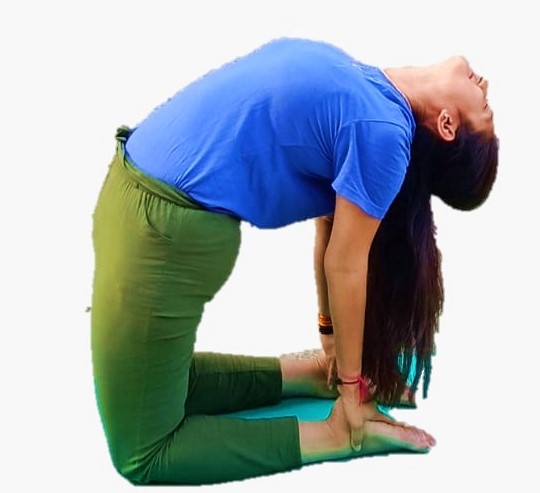

Steps to perform Camel pose: –
1. Stand on knees
2. Knees and feet should be shoulder wide apart
3. Straighten up your arms horizontally
4. Slowly and gradually take right arm towards the right heel and then take the left arm towards the left heel of your body.
5. Lift chest
6. Drop your upper body back
7. Drop head back
8. Maintain the balance of the body posture at the center.
9. Close your eyes and focus on your breath
Dhanurasana (Bow pose)
Dhanurasana is a back bending asana in hatha yoga and modern yoga. Practicing this pose helps open up the chest and stretch the torso. It strengthens the back muscles, improves posture and helps relieve back ache. This pose stretches the entire spine.
In a spiritual practice, dhanurasana stimulates the manipura (solar plexus) chakra, also called the life source chakra, situated just above the navel. Stimulating this chakra increases the digestive fire and activates the flow of prana, or life energy. Manipura chakra also represents the core Self and is tied to the practitioner’s sense of identity and the ability to be confident and in control.


Benefits of Dhanurasana (Bow Pose)
1. Strengthens the back and abdominal muscles
2. Stimulates the reproductive system
3. Opens up the chest, neck, and shoulders
4. Tones the leg and arm muscles
5. Adds greater flexibility to the back
6. Alleviates stress and fatigue
7. Relieves menstrual discomfort and constipation
8. Helps people with renal (kidney) disorders
ADHO MUKHA SVANASA (DOWNWARD DOG pose)
Downward Dog Pose or Downward-facing Dog Pose, also called Adho Mukha Shvanasana, is an inversion asana, often practised as part of a flowing sequence of poses, especially Surya Namaskar, the Salute to the Sun.
It stretches and widens the hamstrings and the calves. In downward dog, your head is lower than your heart, so it has the benefits of inversions and improves the blood flow through your body. Downward dog stretches and helps to relieve tension from the neck and back.
Benefits of Adho Mukha Svanasana
• Strengthens the muscles in your legs.
• Increases the flow of blood to your brain.
• May helps prevent carpal tunnel syndrome.
• Strengthens your arms and shoulders.
• Alleviates pain in the lower back.
• Relieves stress and anxiety.
As we are able to relax in this posture, we start to feel how nourishing this stretch is. All of the subtle adjustments required in the pose and also our strength and flexibility to maintain the stretch will gradually become easier with time and practice.
Downward Facing Dog is a foundational pose that brings us to a place of deep balance. In this foundation pose, we can check our alignment in a very active and functional way.
Apart from strengthening several parts of the legs, this pose also helps in building mobility and flexibility of the back and spine.
Anjaneyasana(Low Lunge Pose)
This low lunge is a beginner-friendly position that’s easy to do yet nonetheless powerful.
Anjaneyasana is commonly known as the low lunge pose. This kind of yoga posture incorporates a deep low lunge. This yoga pose personifies lord hanuman, son of Anjani; hence it is called anjaneyasana. This asana is like the Ardha Chandrasana. The preparatory pose for Anjaneyasana is Virabhadrasana and Ardha Chandrasana
Health Benefits of Anjaneyasana
Enhance Lower Body Flexibility and Strength
Beneficial for Heart Chakra
Relives Sciatica and Strengthens the Spine
Bring Awareness and Build Mental Focus
Massages Abdominal Organs
Re-energize the Body
Activates the functioning of the Thyroid Gland
Yoga leads to major transformation in life.
Thus Be a Yogi,
Thus experience yoga
Thus create a healthy path to the healthy living.
Thus shine like a rising sun
Ms Raveena Tandon
(Science Facilitator, Table-Tennis Player and Yoga Practitioner)
Contact – 8178768848



